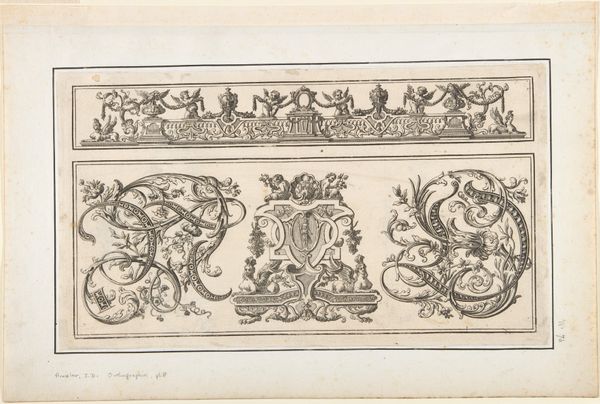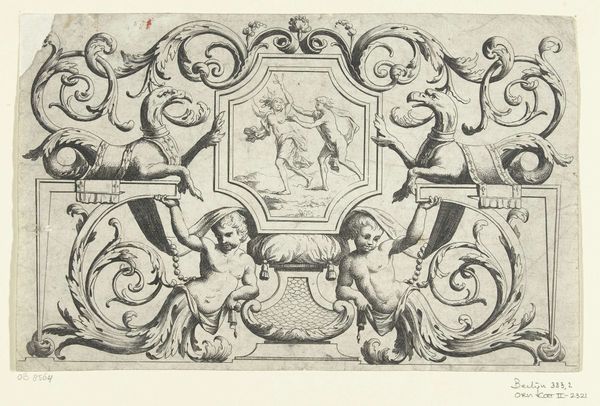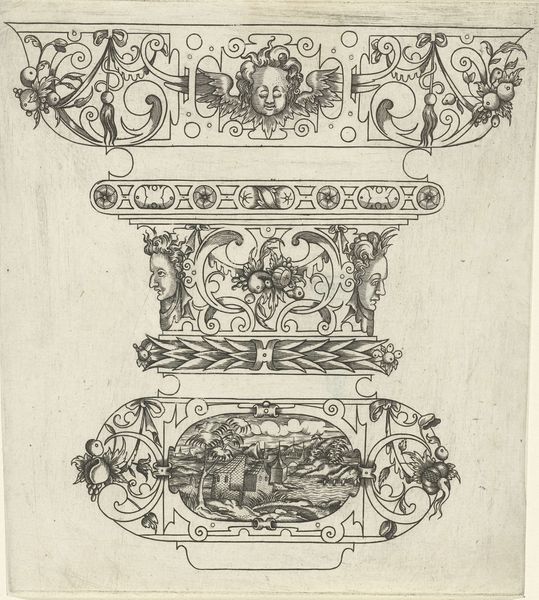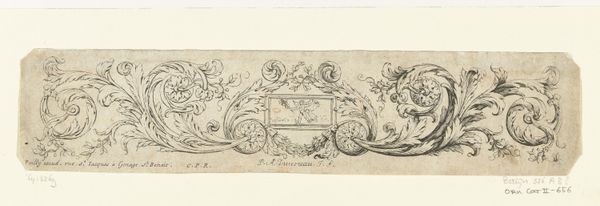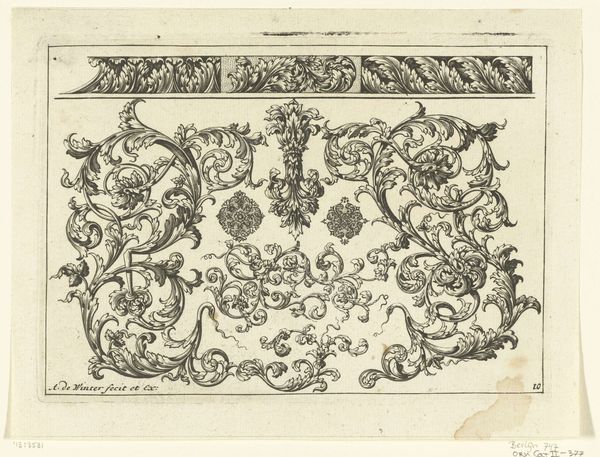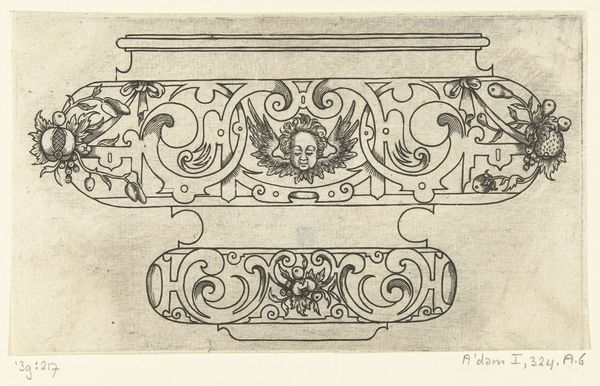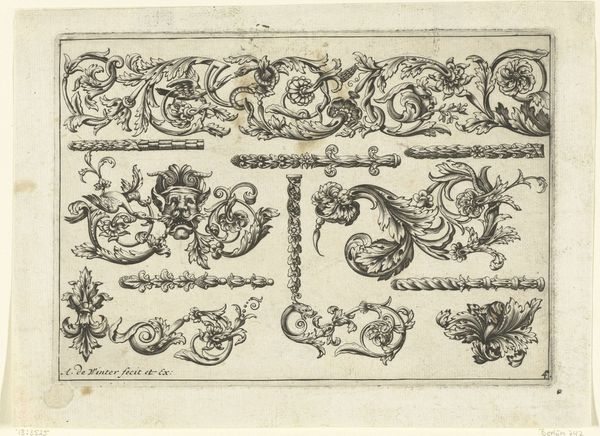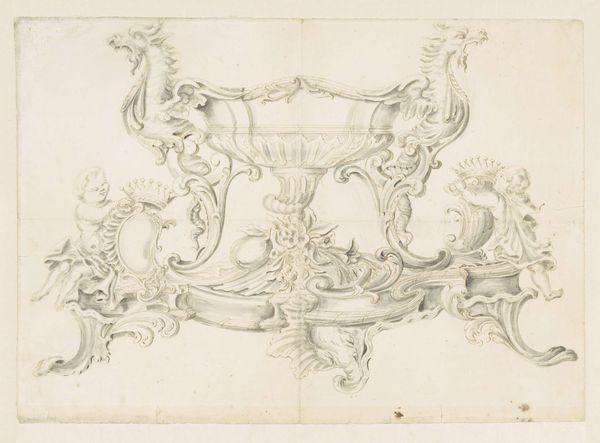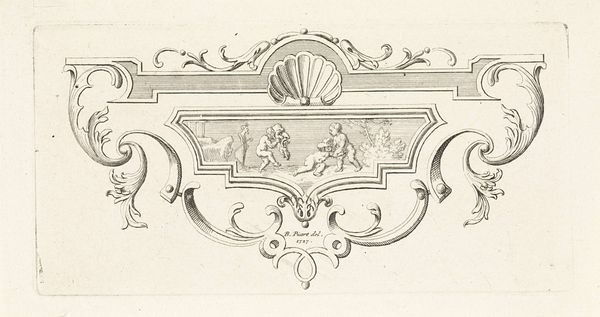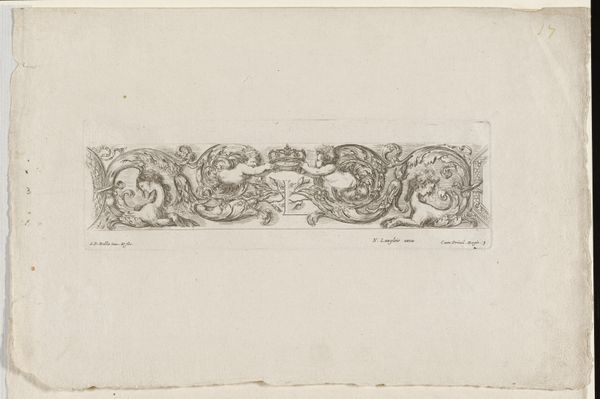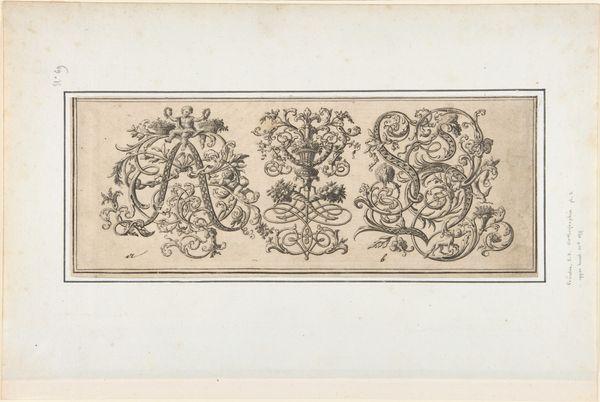
print, engraving
#
pen drawing
# print
#
old engraving style
#
landscape
#
figuration
#
11_renaissance
#
northern-renaissance
#
engraving
Dimensions: height 105 mm, width 162 mm
Copyright: Rijks Museum: Open Domain
Curator: I'm struck by the whimsy of this engraving. Do you feel that too? Editor: Absolutely! It's intriguing, a little like a puzzle. This print, held in the Rijksmuseum, is known as "Cuppa, gedecoreerd met twee friezen", dating from sometime between 1500 and 1598. Curator: "Cuppa?" So, meant to decorate a cup, then. That contextualizes the composition for me. How do those borders play into perceptions of symbolic imagery during the Renaissance? It blends demonic and idyllic representations rather intriguingly. Editor: That blending is characteristic, isn't it? Remember the pervasive anxieties of the period and its evolving worldview; this artist, though anonymous, draws together nature and the grotesque in a pretty commonplace manner. The framing also suggests a particular vision, deliberately setting aside what should or should not be juxtaposed. Curator: I’m seeing pagan symbols cheek-by-jowl with Christian, a deliberate disruption to established meanings. Those winged demons feel particularly relevant to broader, more public expressions, like morality plays or printed books of the era. Editor: A tension is palpable! The landscape within the frieze seems placid enough. There’s a quaint village, a large palm tree, rendered with beautiful clarity, but framed by what? Demons and ornate swirls of… growth? It speaks to the fragile hold of "civilization," perhaps. Curator: Yes! And notice that juxtaposition with the cherubic head in the second frieze below. Such sharp contrasts point to something more than mere decoration. I see echoes of larger spiritual struggles from that period. It gives symbolic form to the conflicts brewing beneath the surface. Editor: It does provoke such consideration! For me, I look at this design and see how the act of embellishment becomes this charged socio-cultural act. These engravings acted almost like proto-memes—circulating quickly and broadly to make cultural values visible, touchable, portable, discussable... Curator: So interesting how what was designed to adorn an object reflects the turmoil of its era. Editor: Precisely. Now, I can't help but think about this artwork in terms of how design shapes history. Thank you!
Comments
No comments
Be the first to comment and join the conversation on the ultimate creative platform.

